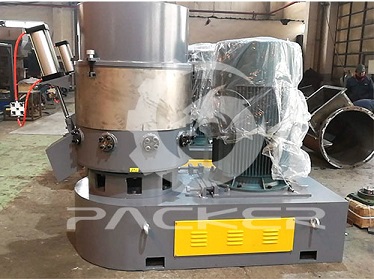 English
English Español
Español  Português
Português  русский
русский  Français
Français  日本語
日本語  Deutsch
Deutsch  tiếng Việt
tiếng Việt  Italiano
Italiano  Nederlands
Nederlands  ภาษาไทย
ภาษาไทย  Polski
Polski  한국어
한국어  Svenska
Svenska  magyar
magyar  Malay
Malay  বাংলা ভাষার
বাংলা ভাষার  Dansk
Dansk  Suomi
Suomi  हिन्दी
हिन्दी  Pilipino
Pilipino  Türkçe
Türkçe  Gaeilge
Gaeilge  العربية
العربية  Indonesia
Indonesia  Norsk
Norsk  تمل
تمل  český
český  ελληνικά
ελληνικά  український
український  Javanese
Javanese  فارسی
فارسی  தமிழ்
தமிழ்  తెలుగు
తెలుగు  नेपाली
नेपाली  Burmese
Burmese  български
български  ລາວ
ລາວ  Latine
Latine  Қазақша
Қазақша  Euskal
Euskal  Azərbaycan
Azərbaycan  Slovenský jazyk
Slovenský jazyk  Македонски
Македонски  Lietuvos
Lietuvos  Eesti Keel
Eesti Keel  Română
Română  Slovenski
Slovenski  मराठी
मराठी  Srpski језик
Srpski језик
How to choose different types of plastic film agglomeration machines?
2021-08-16
Choosing the right plastic film agglomerator pelletizing process needs to consider not only the shape and output of the pellets. For example, the temperature of the particles and the residual humidity are in an opposite proportional relationship; that is, the higher the temperature of the product, the lower the residual humidity. Some composite materials, such as many types of thermoplastic elastomers, are viscous materials, especially under high temperature conditions. This result can be obtained by calculating the amount of aggregates (paired aggregates and multiple aggregates) in a batch of pellets.
In the underwater pelletizing system, there are two ways to produce this kind of cohesive pellet aggregates.
1. Immediately after cutting, the surface temperature of the pellets is only about 50° higher than the temperature of the production water, while the center of the pellets is still molten, and the average pellet temperature is only 35-40° lower than the melting temperature. If two pellets come into contact, they deform slightly, creating a contact surface between the pellets, which may not contain process water. In the contact zone, due to the heat transferred from the melting center, the solidified outer layer will immediately remelt and the pellets will fuse with each other.
2. After the pellets are discharged from the drying equipment, the surface temperature of the pellets will increase due to the heat transfer from the center to the indicator. If pellets of soft thermoplastic polyolefin elastomer are stored in a container, the pellets will be deformed, and the warmed contact surface between the individual pellets will become larger, and at the same time, the viscosity will increase and aggregates will be formed again.
In the underwater pelletizing system, there are two ways to produce this kind of cohesive pellet aggregates.
1. Immediately after cutting, the surface temperature of the pellets is only about 50° higher than the temperature of the production water, while the center of the pellets is still molten, and the average pellet temperature is only 35-40° lower than the melting temperature. If two pellets come into contact, they deform slightly, creating a contact surface between the pellets, which may not contain process water. In the contact zone, due to the heat transferred from the melting center, the solidified outer layer will immediately remelt and the pellets will fuse with each other.
2. After the pellets are discharged from the drying equipment, the surface temperature of the pellets will increase due to the heat transfer from the center to the indicator. If pellets of soft thermoplastic polyolefin elastomer are stored in a container, the pellets will be deformed, and the warmed contact surface between the individual pellets will become larger, and at the same time, the viscosity will increase and aggregates will be formed again.
This phenomenon is further enhanced in the case of smaller pellet sizes, such as fine particles, because the ratio of surface area to volume increases as the diameter becomes smaller. Adding wax materials can reduce the aggregates of the pellets, and the same can be achieved by pulverizing the surface of the pellets immediately after the pellets come out of the drying equipment.




